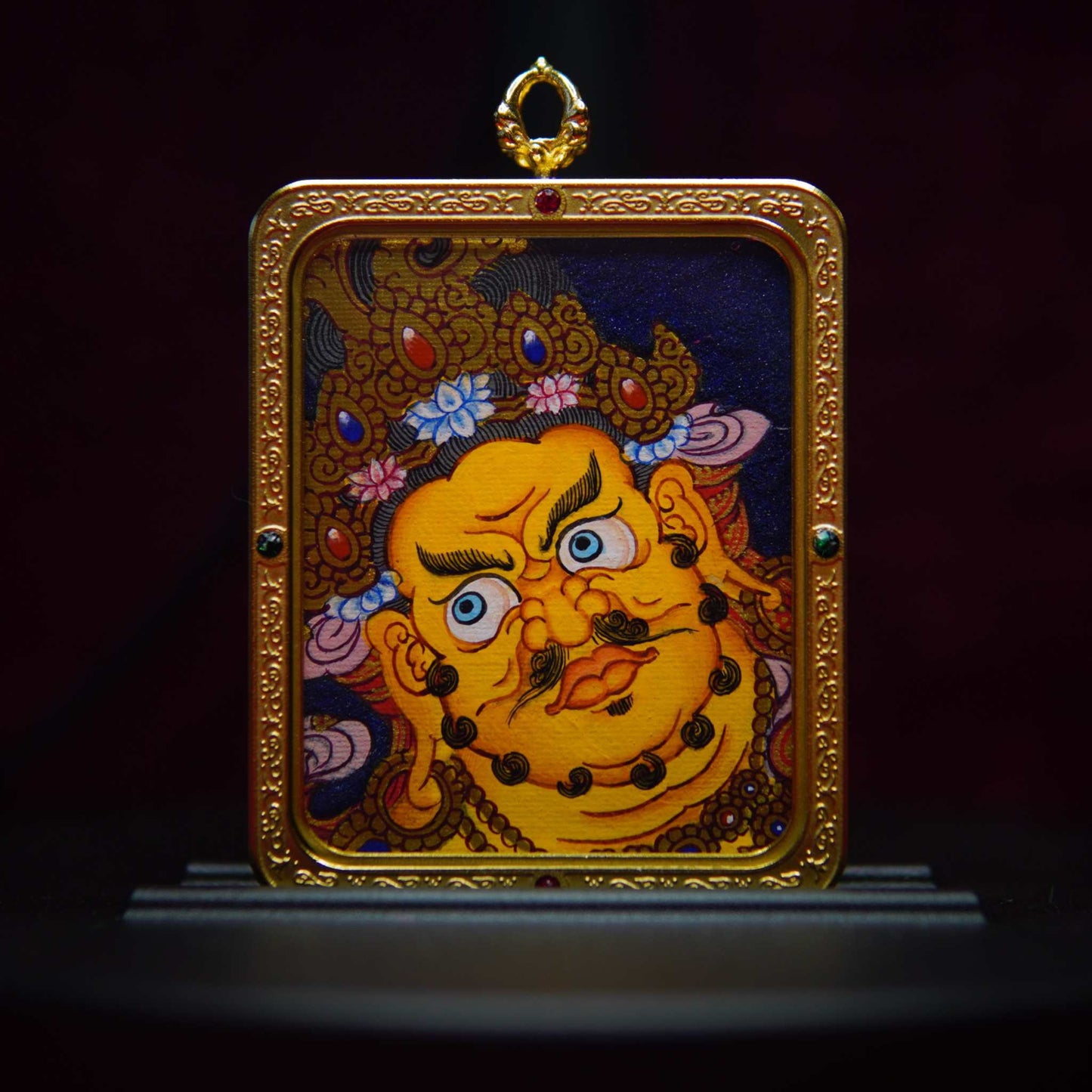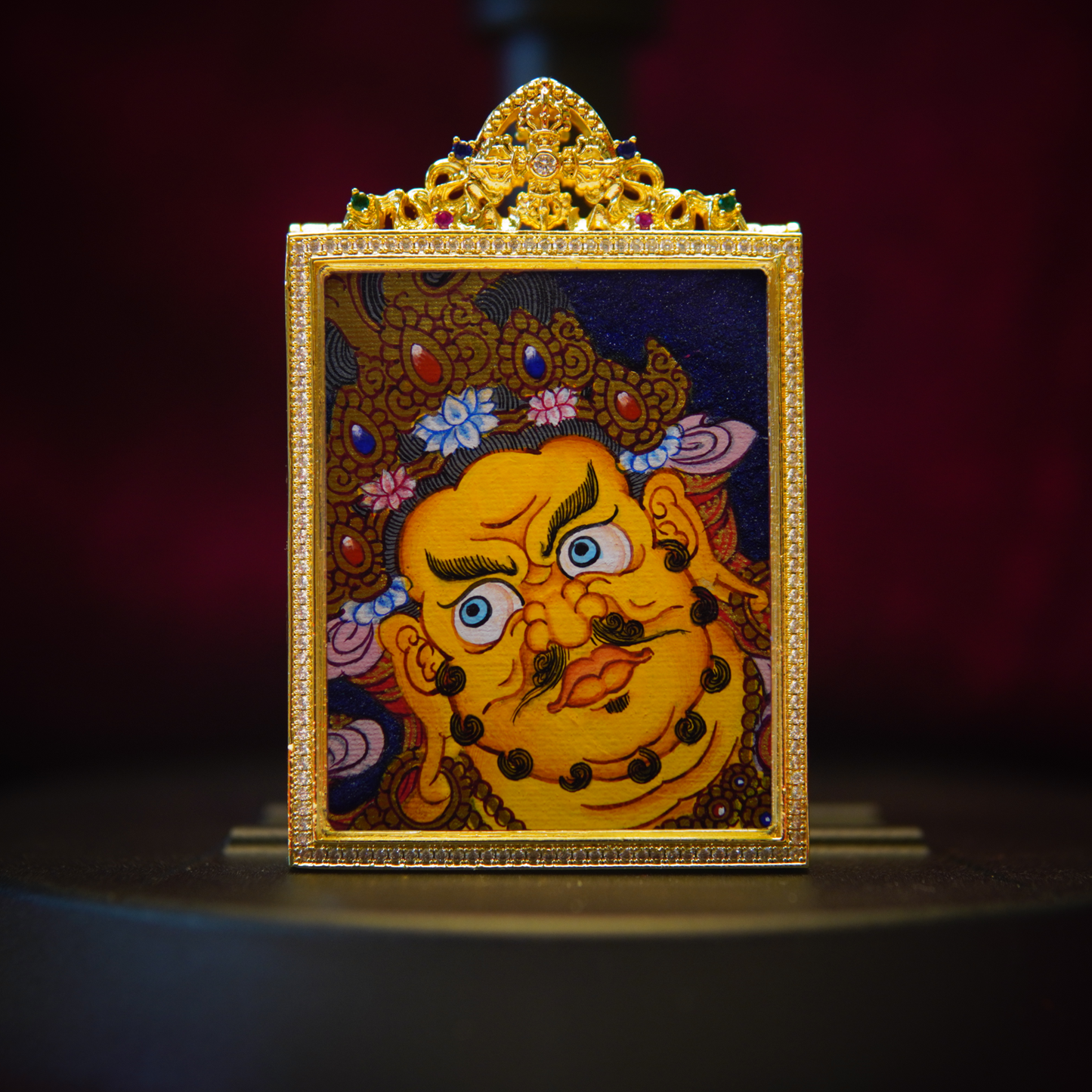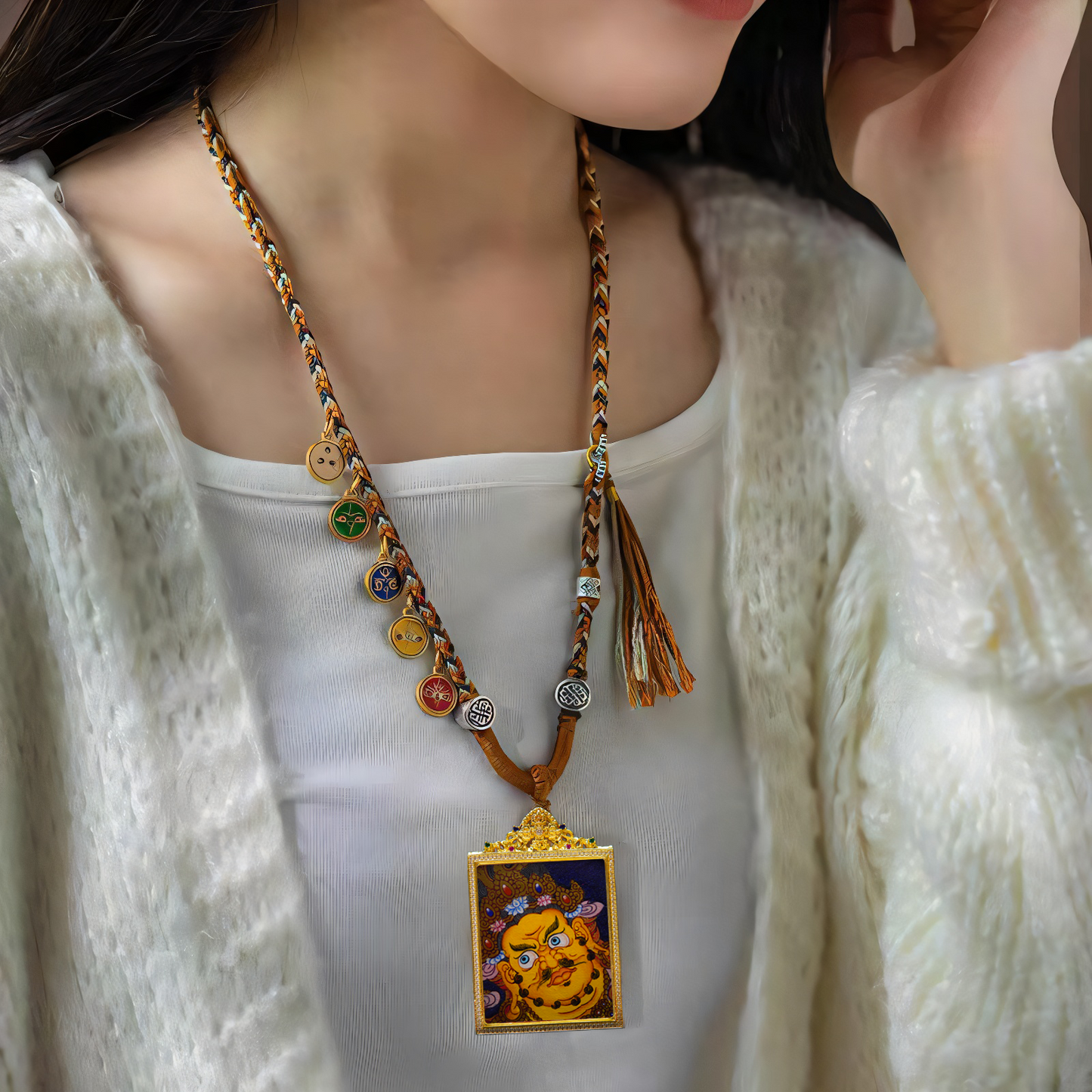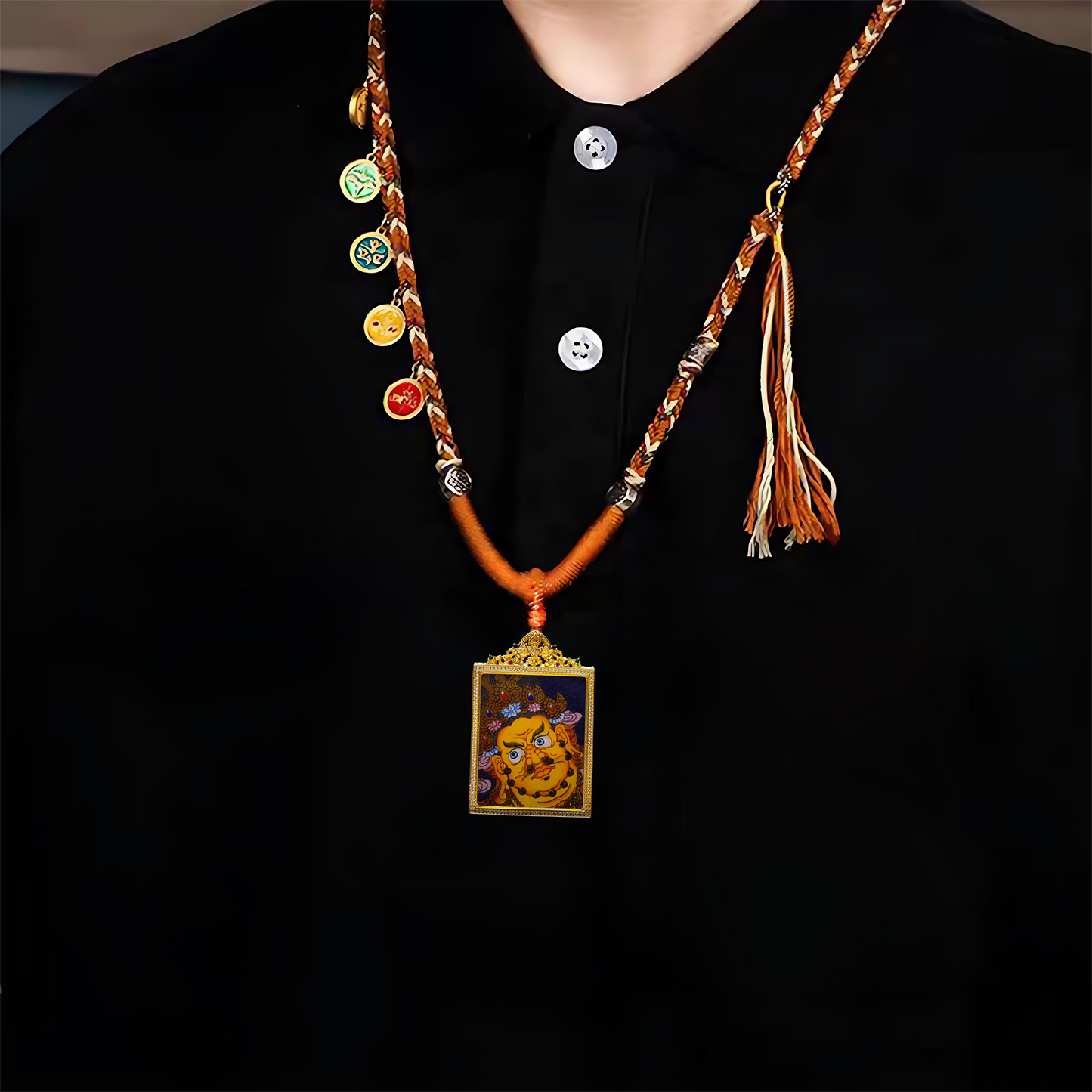Zendo Thangka
Handmade Yellow Jambhala Buddha Necklace - Wealth Attraction Pendant w/Gold Frame & Gemstones • Tibetan Buddhist Jewelry
Handmade Yellow Jambhala Buddha Necklace - Wealth Attraction Pendant w/Gold Frame & Gemstones • Tibetan Buddhist Jewelry
픽업 사용 가능 여부를 로드할 수 없습니다.
✨ Visual Grandeur & Symbolism
Iconic Centerpiece :
Golden Prosperity: Jambhala’s benevolent gaze in rich aureolin yellow, emanating abundance through large, wisdom-filled eyes and magnetic countenance.
Regal Adornments: Crowned with a filigreed headdress detailed with sapphire blue, ruby red, and emerald green gemstones—each stone amplifying specific wealth energies.
Contrast Mastery: Set against a deep indigo-blue background symbolizing infinite potential, framed by intricately carved gold borders with embedded garnet corner gems.
Design Specs: Dimensions: [Insert size]; Materials: Mineral pigments on cotton canvas, brass alloy frame, silk cord.
💰 Why Global Buyers Connect
Attract Sustainable Wealth: In Tibetan tradition, Yellow Jambhala dissolves financial obstacles, activates unexpected opportunities, and nurtures generosity-based prosperity (business owners’ favorite!).
Energy Anchoring: Gold frame creates a conductive loop for energy flow, while gemstones synergize:
🔵 Sapphires: Invite clarity for wealth decisions
🔴 Rubies: Ignite passionate action
🟢 Emeralds: Attract new income streams
Mindful Manifestation: Use during money meditations or client meetings to align with "conscious wealth" principles (self-made millionaires' secret).
"Wear this not as jewelry, but as a portable altar. Feel its energetic pull when signing contracts, pitching investors, or visualizing goals."
Product parameters
Canvas type: pure hand drawn
Size: 4cm * 5cm
Weight: 68 grams
Shell material: Pure copper plated with 24K gold
Fillers (jewelry): lapis lazuli, turquoise, south red agate, hibiscus stone, black agate, olivine, saffron, Xizang manna pills, Buddhist scriptures
Investment Value & Cultural Legacy
A Timeless Collectible with Appreciation Potential
Beyond its spiritual power, this Thangka Necklace embodies a handcrafted masterpiece rooted in a 600-year-old Himalayan tradition. As interest in authentic Tibetan Buddhist art surges globally among collectors and mindfulness enthusiasts, meticulously crafted thangkas like this offer dual value: profound cultural symbolism and promising collectible allure.
Why This Piece Holds Future Value:
1. Craftsmanship Rarity:
Traditional Techniques: Painted with natural mineral pigments on cotton/silk canvas (thangkas are typically created using organic materials that retain vibrancy for generations).
Masterful Detailing: Each brushstroke reflects the artist’s mastery in sacred iconometry—demanding years of training. Few artisans worldwide uphold this rigorous tradition.
2. Growing Market Appreciation:
Rising Demand: Auction houses like Sotheby’s report growing Western interest in high-quality Himalayan art (source: 2023 Asian Art Market Report).
Cultural Heritage Status: UNESCO recognizes Thangka painting as an Intangible Cultural Heritage, driving institutional and private collector demand.









